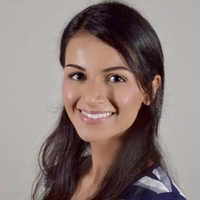Investigating Photolytic Aerobic Alkane Iodination Catalysis
This summer I worked under the mentorship of Professor Karen Goldberg and Dr. Nate Hirscher, in the Department of Chemistry. Considering the issues faced when utilizing methane, the Goldberg group seeks to functionalize methane towards the goal of transforming chemical feedstocks to valuable chemical products. To this end, we also aim to integrate sustainability into these efforts which has led to the use of oxygen (O2) as a terminal oxidant in the alkane functionalization.
Our project has the overarching goal of iodinating methane, and we studied the iodination of cyclohexane as a means of understanding the reaction mechanism. The net reaction consists of photolyzing cyclohexane (excess), water, acetonitrile (solvent), Cl- (catalyst), and iodine (limiting reagent) under 390-nm UV irradiation to produce cyclohexyliodide and water. Precedented methods of alkane functionalization have involved toxic transition metal complexes as a means of oxidation, but our metal-free process utilizes water and oxygen as "green" reagents.
This reaction involves a fast, anaerobic regime followed by a slow, aerobic regime. The anaerobic regime is responsible for producing the targeted cyclohexyliodide product and the aerobic regime is responsible for regenerating the Cl- catalyst in its radical form. Upon building a strong understanding of the mechanism, my work this summer focused on scaling-up this reaction. I designed a batch reactor to facilitate the slow addition of I2 reagent and conducted time-course experiments with the modification of I2 addition rate and initial conditions to fine-tune selectivity for cyclohexyliodide and maximize catalytic productivity over time. As a follow-up, I investigated flow photochemistry and designed a flow reactor to facilitate the variable addition of reaction and conducted time-course experiments with modified reaction addition rate.
Based on my work, I conclude that the batch reactor design with pumping of I2 reagent allows for linear catalytic productivity over the course of experiment and the flow reactor design has large source of error that needs identification but gives faster catalytic productivity. Direct future work includes optimizing and building a better understanding of the flow system. Future work of interest involves reintroducing metal complexes back into this reaction, specifically an iridium complex, with the intention to utilize green light and offer another way to regenerate the chlorine radical catalyst in the system.
Pursuing research in the Goldberg lab group gave me the valuable opportunity to apply key concepts I learn in my chemistry and chemical engineering coursework to real-world energy problems. Engaging in thoughtful discussions with my mentors along with introspection from reading literature taught me the value of ingenuity and approaching information from the standpoints of both engineers and chemists. I also learned and exercised several chemistry techniques such as utilizing gas chromatography (GC-FID) to quantify our products, UV-VIS analysis to monitor speciation, and designing reaction systems following the principles of photochemistry. I am excited to continue my work with the Goldberg group and continue to fulfill my passion of questioning, learning, and solving problems.

Comments
WOW
Nidhi- That was such a great presentation!!! Simply outstanding. I hope that the discussion session also went well.
-Karen